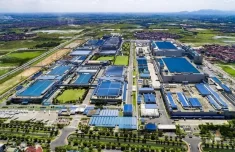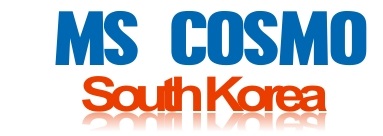Production recovered strongly in the first months of the year, leading to a potential boom in industrial real estate demand in the future.
Since last year, the shift of production from China as well as the trend of businesses investing in Vietnam to benefit from free trade agreements has caused the demand for industrial land across the country to increase sharply. However, in many localities, especially Ho Chi Minh City, the development of “clean” land funds for industrial production still faces many obstacles.
Urgently replenishing supplies
Facing optimistic forecasts about Vietnam’s economic recovery in the 2021-2022 period, investment attraction results in the first 3 months of 2021 grew quite strongly, with a series of industrial park construction projects with a scale of hundreds of hectares. In our country, the investment value of many thousands of billions of VND in many provinces and cities has investment policies approved to meet the demand for land for industrial production which is forecast to skyrocket in the near future.

Industrial parks in Ho Chi Minh City have difficulty expanding their area to welcome the strong wave of investment shifts.
According to VietnamFinance statistics, in the first 3 months of 2021, there were 25 approved Industrial Park projects, mainly concentrated in the Northern region including: Bac Ninh, Vinh Phuc, Hai Duong, Hung Yen, Thai Binh, Ha Nam… These are projects worth more than trillions of large enterprises such as Viglacera, Gilimex, Sonadezi, Hanaka, Hoa Phat…
For example, in Bac Giang, the Prime Minister has just decided on the policy of investing in the project of building and trading infrastructure of Viet Han Industrial Park in Viet Yen district and at the same time adjusting and supplementing the national development planning. series of industrial parks in Yen Dung, Luc Nam, Lang Giang districts with each project scale from 100-300 hectares; Quang Chau Industrial Park expansion project (Viet Yen district) with an additional area of 90 hectares; Hoa Phu Industrial Park project (Hiep Hoa district) with an additional area of 85 hectares…
In Bac Ninh, one of the major projects approved is the investment project for construction and infrastructure business of Gia Binh Industrial Park, with a total capital of more than 2,578 billion VND, scale of 306.69 hectares in Gia Binh district. Jar. In addition, there is also an investment project in Yen Phong II-A Industrial Park in Yen Phong district with a scale of 151.27 hectares. Most recently, on April 12, the People’s Committee of Bac Ninh province issued a decision to establish Gia Binh II Industrial Park with an area of 250 hectares in Gia Binh district.
In Hanoi, the Government also issued Decision No. 539/QD-TTg on the policy of investment project to build technical infrastructure of Soc Son Clean Industrial Park, Soc Son district. The project has a land use scale of 302.8 hectares, with a total expected investment capital of nearly 3,227 billion VND.
Particularly in Ho Chi Minh City, the government has proposed to the Prime Minister to allow the city to make zoning plans to build the 380.8 ha Pham Van Hai land area, Binh Chanh district (belonging to Pham Van Hai farm) into an Industrial Park.
Mr. Dao Xuan Cuong, Head of the Industrial Zones Management Board of Bac Giang province, said that currently, the planned land area of the province’s Industrial Zones is 1,322 hectares. With 5 Industrial Parks already in operation, currently the industrial land areas of basic Industrial Parks have been rented out by secondary investors for production investment. “The wave of investment in Vietnam is growing, including Bac Giang province, which is always in the top 10 provinces with the largest investment attraction in the country. With strong development in the coming time, the demand for industrial land is huge, while the area of industrial land is limited. Therefore, projects proposed for implementation must be carefully considered in terms of land use needs, socio-economic efficiency, etc. to avoid waste and ineffective use of industrial land” – Mr. Dao Xuan Cuong emphasized.
From a business perspective, Mr. Ha Trong Binh, General Director of Nam Tan Uyen Industrial Park Joint Stock Company (Binh Duong province, member unit of Vietnam Rubber Industry Group), said the company’s orientation 2021 is to promote investment in infrastructure construction to promote land subleasing when the Nam Tan Uyen project expands phase II to nearly 346 hectares (phase I with a total area of 650 hectares has come into operation and is filled. completely filled with 246 projects) complete legal documentation procedures. “Our orientation is to attract projects in industries with high knowledge density, high technology content, and large investment scale. We also prioritize Vietnamese businesses, large FDI enterprises and anti-speculation policies. The demand for investment in the Industrial Park from domestic and foreign investors is very high, so we recommend that the People’s Committee of Binh Duong province quickly make a decision to hand over land so that we can promptly welcome investors. They came but did not have a “nest” to “park” because we still had problems with legal procedures” – Mr. Binh expressed.
Drastically remove problems
Mr. Hua Quoc Hung, Head of the Management Board of Ho Chi Minh City Industrial Parks (Hepza), said that the city is implementing programs to support the development of businesses and products in the rubber – plastic, mechanical – automation industries. , food and food processing. Hepza is assigned the task of preparing the land fund to receive these supporting industries in the direction of zoning. “We plan to arrange industries in Pham Van Hai industrial park and will be arranged in the direction of specialized zones” – Mr. Hua Quoc Hung said and said that the city focuses on many industries and professional associations. Every industry needs a production land fund, but the level of response is limited because the land fund is limited.
According to planning, the city’s industrial land fund is 5,921 hectares, with an occupancy rate of about 72%. About 28% of the remaining planned land area is facing problems with land legality, rental prices… so it cannot be put into operation. Recently, Chairman of the City People’s Committee Nguyen Thanh Phong personally worked with Hepza to resolve and remove these problems, including “releasing” clean land for investors in parallel with developing the land fund. The new Pham Van Hai industrial park. City leaders also worked with the Department of Natural Resources and Environment on dedicating an additional 2,000 hectares for industrial production, including converting land use purposes for industrial production. “Existing industrial parks still have a land fund of about 200-300 hectares. Hopefully, with the determination of city leaders, this year will solve legal issues, land rent… and have a clean land fund to call for investment, meeting the needs of businesses” – Mr. Hua Quoc Hung information.
Another member of Hepza’s board of directors, Mr. Dao Xuan Duc, deputy head of the board, said that Ho Chi Minh City does not have a large land fund for industrial production like Dong Nai and Binh Duong. Besides, when compensation for land clearance, agricultural land is calculated according to the price of residential land, so there is still a situation of compensation for leopard skin in industrial zones. This situation has been going on for many years and has not been resolved. The encroachment of construction is getting worse and worse, pushing up the compensation and clearance costs so high that Hepza cannot do it. “In fact, there is no shortage of land for industrial production. The problem is how to solve difficult problems to supplement “clean” land sources and how to use them effectively. The city does not have a policy of filling industrial parks at any cost, but rather screens and selects projects to attract investment, aiming to increase investment efficiency per hectare” – Mr. Dao Xuan Duc informed.
Also according to Hepza, industrial land rental prices in Ho Chi Minh City are very high. For example, in Vinh Loc industrial park, the rental price of 1 m2 of land is up to 350 USD, with a useful life of only 30 years; Some other industrial parks have short land use periods and equally high prices, but investors still need to rent them. “Many businesses locate manufacturing enterprises in labor-intensive fields in the provinces but still choose to locate high-tech enterprises and scientific research centers in Ho Chi Minh City. The problem is how the city can afford to provide land funds and create conditions for businesses to do business” – Hepza representative wondered.
Concerned that the rent is too expensive
According to a report by real estate services company JLL Vietnam, land and factory rental prices in the Northern and Southern regions both reached new peaks in the first quarter of 2021. Specifically, in the Northern provinces, only in In the first 3 months of the year, industrial land prices in this area reached a new peak, at 107 USD/m2/rental period, up 8.1% over the same period last year; Ready-built factories for rent also recorded an increase of 5.8%.
In the South, industrial park land prices and rental prices also continue to grow, currently reaching a new peak at 111 USD/m2/rental period, an increase of 8.1% over the same period last year. Meanwhile, the rental price for ready-built factories reached an average of 4.5 USD/m2/month for the entire region, up 3.1% over the same period last year due to many small and medium-sized enterprises wishing to open. wide production. Among them, Binh Duong and Dong Nai lead the supply of both types of industrial park land and ready-built factories, but like other localities, these two provinces did not record new supply in the first quarter of 2021.
Mr. John Campbell, Head of Savills Vietnam Industrial Real Estate Department, said that rising prices are a concern for manufacturing industries with low value and low profit margins such as textiles, garments and furniture. “If rental prices continue to increase along the same trajectory from 2018, Vietnam’s price competitiveness may be weakened, unless more industrial land supply is deployed in key economic areas. points to meet demand and stabilize prices” – this person emphasized.





















